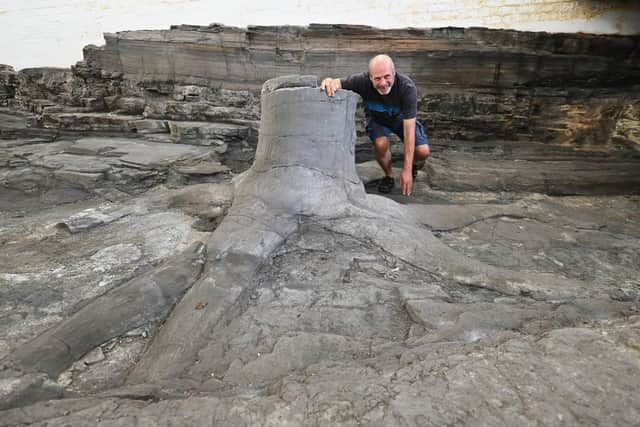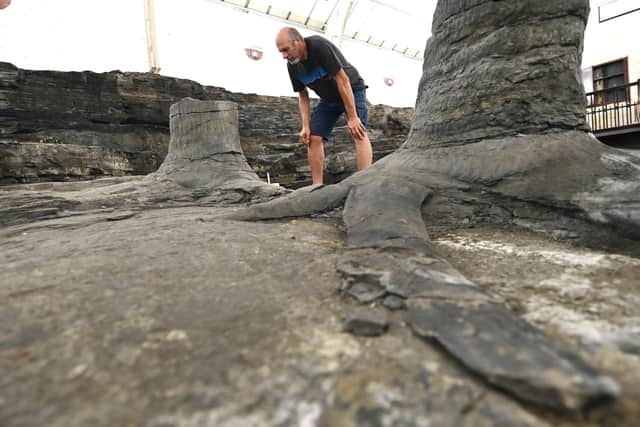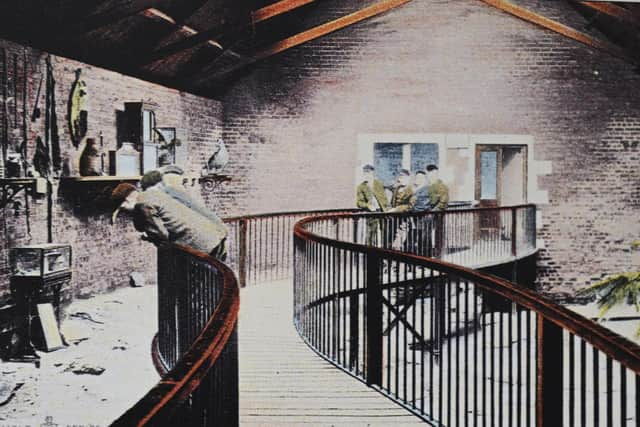Race on to save 325 million-year-old fossil trees in Glasgow's west end
Fossil Grove in Victoria Park contains 11 tree stumps which stand on land where they once lived near the Equator, roughly in the same area as Brazil, but which drifted north as continents broke up and shifted.
The remains of 11 lycopod trees, that were spectacularly preserved by two flood events and buried in sand that later turned to sandstone, were discovered in the 19th century during quarry digging in Glasgow, with the Fossil House built to protect them.
Advertisement
Hide AdAdvertisement
Hide AdBut changes to the building, which is owned by Glasgow City Council, have left the enclosure damp and overly humid, with dripping salty water from the roof now coating the tree stumps and putting their survival at risk.


David Webster, a geologist of the Fossil Grove Trust, said the building was like a “dark, damp, cave” with the fossils now under threat.
He said: “The fossils and the building are in decay given the high humidity in the building.
“The council have not spent any money on the building in a number of years. It was originally a well-designed ventilated building, but later developments has meant the dampness is causing problems for the fossils.
“In the last 30 years, it has got incredibly damp. All the equipment has been damaged, the lights don’t work and the fossils are being damaged by the water dripping off the roof. The water is creating salts that are destroying the fossils.”


Mr Webster said the Victorians “recognised the worth” of the fossils and raised a considerable amount of money to protect them with a new building, but that plastic roof panes fitted in the ’90s had led to poor ventilation.
Latterly, Glasgow City Council allowed access to Fossil House, with a member of the parks team made available to let in visitors. The council has not re-opened the building since lockdown hit.
Meanwhile, the Fossil Grove Trust has funded essential repairs with added money secured from the Heritage Lottery Fund to commission a feasibility study on the building and collection, with the final report due soon.
Advertisement
Hide AdAdvertisement
Hide AdThe trust may go on to rent the building, with volunteers running open days in the meantime.


"It’s a really good example of the community trying to keep something going that they believe in,” Mr Webster said.
He added that Fossil Grove can help people understand the impact of climate change given information held by the rock record,
"We don’t want it to be a case of ‘come to Fossil Grove and look at 11 trees’. We want to broaden out the scope of what they can tell us,” Mr Webster said.
Historic Environment Scotland said it had been working to “understand the cause of the decay and deterioration” and to identify the best conditions to “ensure preservation of this unique asset”.
A spokesman for Glasgow City Council said it was “working closely” with the trust.
He added: “There are clear challenges with preserving the fossils within what is a variable environment.
“But we are hopeful the feasibility study and subsequent discussions with the trust will provide a way forward.”
A message from the Editor:Thank you for reading this article. We're more reliant on your support than ever as the shift in consumer habits brought about by Coronavirus impacts our advertisers.
If you haven't already, please consider supporting our trusted, fact-checked journalism by taking out a digital subscription.
Comments
Want to join the conversation? Please or to comment on this article.